There are three types of clouds: public, private, and hybrid. Each type requires a different level of management from the customer and provides a different level of security.
Public cloud
In a public cloud, the entire computing infrastructure is located on the premises of the cloud provider, and the provider delivers services to the customer over the internet. Customers do not have to maintain their own IT and can quickly add more users or computing power as needed. In this model, multiple tenants share the cloud provider’s IT infrastructure.
Private cloud
A private cloud is used exclusively by one organization. It could be hosted at the organization’s location or at the cloud provider’s data center. A private cloud provides the highest level of security and control.
Hybrid cloud
As the name suggests, a hybrid cloud is a combination of both public and private clouds. Generally, hybrid cloud customers host their business-critical applications on their own servers for more security and control and store their secondary applications at the cloud provider’s location.
Multicloud
The main difference between hybrid cloud and multicloud is the use of multiple cloud computing and storage devices in a single architecture.
Cloud computing services
There are three main types of cloud services: software as a service (SaaS), platform as a service (PaaS), and infrastructure as a service (IaaS). There’s no one-size-fits-all approach to cloud; it’s more about finding the right solution to support your business requirements.
SaaS
SaaS is a software delivery model in which the cloud provider hosts the customer’s applications at the cloud provider’s location. The customer accesses those applications over the internet. Rather than paying for and maintaining their own computing infrastructure, SaaS customers take advantage of subscription to the service on a pay-as-you-go basis.
Many businesses find SaaS to be the ideal solution because it enables them to get up and running quickly with the most innovative technology available. Automatic updates reduce the burden on in-house resources. Customers can scale services to support fluctuating workloads, adding more services or features they grow. A modern cloud suite provides complete software for every business need, including customer experience, customer relationship management, customer service, enterprise resource planning, procurement, financial management, human capital management, talent management, payroll, supply chain management, enterprise planning, and more.
PaaS
PaaS gives customers the advantage of accessing the developer tools they need to build and manage mobile and web applications without investing in—or maintaining—the underlying infrastructure. The provider hosts the infrastructure and middleware components, and the customer accesses those services via a web browser.
To aid productivity, PaaS solutions need to have ready-to-use programming components that allow developers to build new capabilities into their applications, including innovative technologies such as artificial intelligence (AI), chatbots, blockchain, and the Internet of Things (IoT). The right PaaS offering also should include solutions for analysts, end users, and professional IT administrators, including big data analytics, content management, database management, systems management, and security.
IaaS
IaaS enables customers to access infrastructure services on an on-demand basis via the internet. The key advantage is that the cloud provider hosts the infrastructure components that provide compute, storage, and network capacity so that subscribers can run their workloads in the cloud. The cloud subscriber is usually responsible for installing, configuring, securing, and maintaining any software on the cloud native solutions, such as database, middleware, and application software.
How cloud consumption works
From an end-user perspective, cloud consumption means either using a cloud application or consuming cloud infrastructure. Regardless of resource location, however, understanding infrastructure resource usage and consumption remains critical, because it represents an organization’s ability to serve customers, innovate, and lower operational expenses.
Consumption is defined as the act of using a resource. This concept seems simple enough when applied to the cloud, but implementation differs by service providers. Understanding what exactly it means to consume a resource adds to the complexity. The best cloud providers will help their customers clearly understand the cost of their cloud services and what they can expect to pay for consuming those services.
Cloud computing challenges
Many organizations today are still deciding whether to migrate their on-premises workloads to the cloud. For most organizations, the promise of trouble-free, cloud-based information systems remains an elusive goal. Although cloud technology is pervasive, today’s installations primarily consist of new applications in private clouds managed by in-house IT staff. Most enterprise applications and infrastructure still remains on premises, although that is rapidly changing.
However, IT leaders often hesitate to move critical applications into the hands of cloud service providers—partly because they don’t see a clear migration path for entrenched legacy assets, but also because they aren’t sure whether public cloud services are ready to meet enterprise needs. They are right to be skeptical: Most public cloud offerings are characterized by insufficient deployment choices, limited compatibility between on-premises and cloud systems, and a lack of enterprise-level management capabilities.
How Dawgen Technology helps you migrate to the cloud
Dawgen Technology adopts leading industry-leading cloud computing platform that can help you easily migrate to the cloud while reducing the costs of IT modernization. Your business can preserve its existing investments with familiar tools, and you don’t have to rewrite code to migrate your software assets. Elastic capacity via “cloud bursting” gives you the capacity you need without having to oversubscribe. The biggest savings comes from eliminating capital expenses by lifting and shifting entire workloads to the cloud and retiring data center assets.
For more information on how Dawgen Technology can assist you with your Information Technology (IT) requirements contact us at : [email protected]

